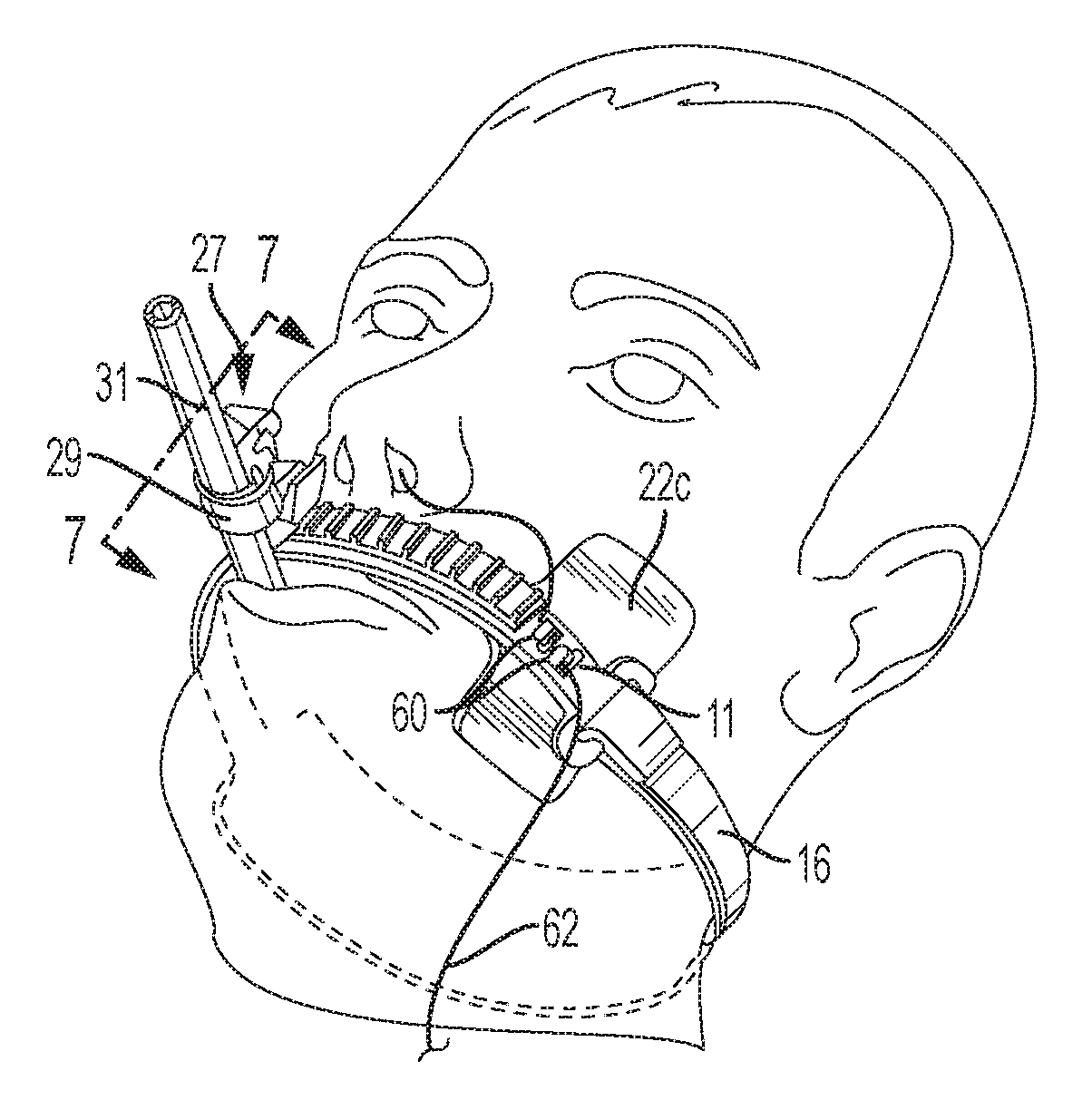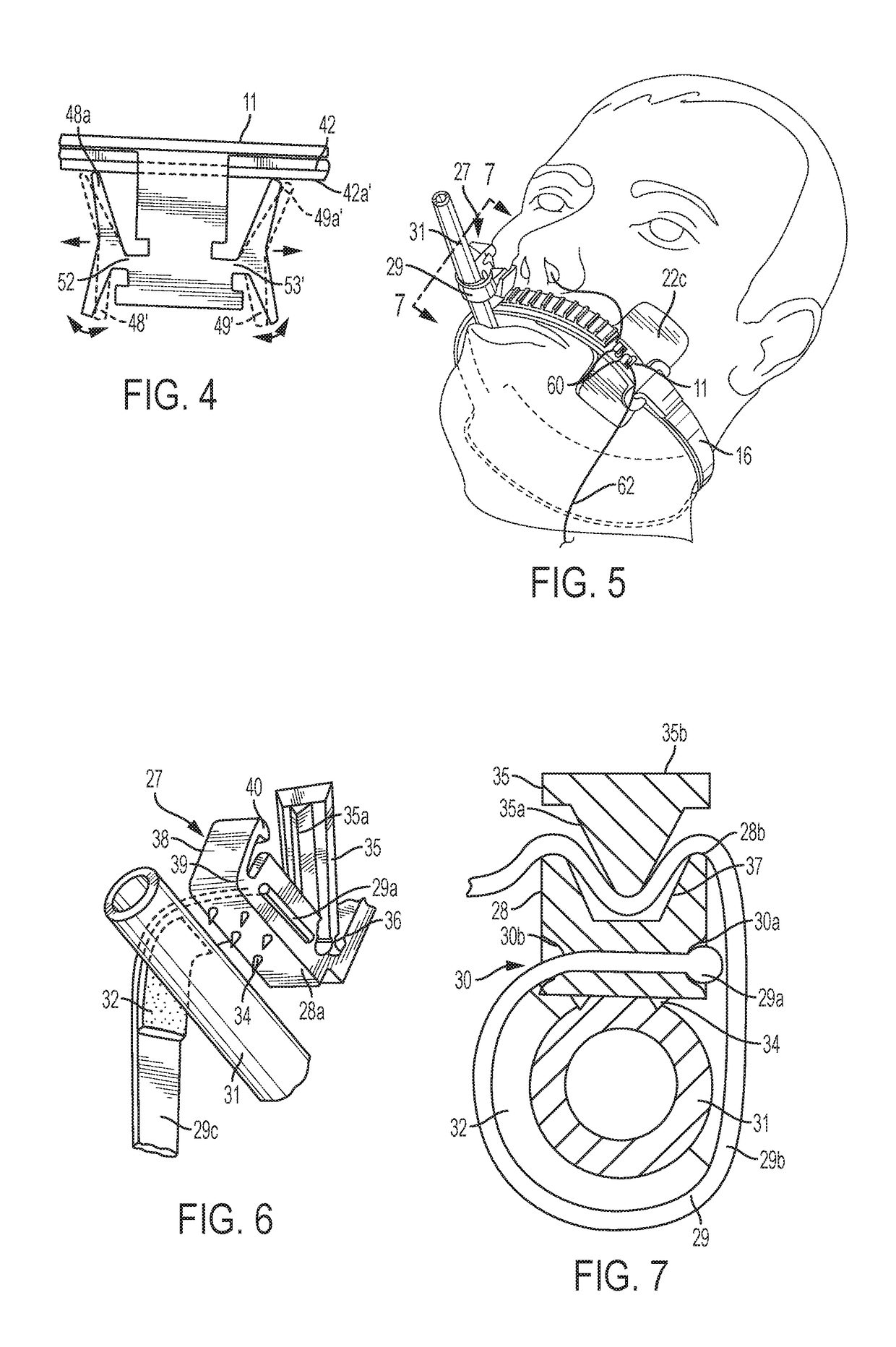Endotracheal Tube and Nasogastric Tube Attachment Device
a technology of nasogastric tube and trachea, which is applied in the direction of trachea tubes, catheters, respirators, etc., can solve the problems of not being believed to be particularly effective, restricting access to the mouth, and adding to the patient's discomfort of being intubated, so as to prevent the movement of the tube holder
- Summary
- Abstract
- Description
- Claims
- Application Information
AI Technical Summary
Benefits of technology
Problems solved by technology
Method used
Image
Examples
Embodiment Construction
[0019]In FIG. 1, the numeral 10 generally designates an endotracheal tube attachment device having an elongated strip 11 of flexible material with inner and outer surfaces 12 and 13 and a pair of opposite ends 14 and 15. Strip 11 is preferably made of tough, flexible plastic material (e.g., polyethylene) and is shaped to fit on a region adjacent to and along one lip of the patient. Although strip 11 can be positioned along either of the patient's lips, it is believed preferable to position strip 11 along the patient's upper lip as illustrated in FIG. 5 due to the fact that if strip 11 were positioned along the lower lip, movement of the lower jaw might have adverse effects on the positioning of the endotracheal tube. Strip 11 is illustrated in FIG. 1 as having a linear and generally planar configuration in an unflexed or untensioned state and FIG. 5 illustrates strip 11 as being flexibly shaped to conform with the arcuate contour of a patient's upper lip. Although strip 11 is shown ...
PUM
 Login to View More
Login to View More Abstract
Description
Claims
Application Information
 Login to View More
Login to View More - R&D
- Intellectual Property
- Life Sciences
- Materials
- Tech Scout
- Unparalleled Data Quality
- Higher Quality Content
- 60% Fewer Hallucinations
Browse by: Latest US Patents, China's latest patents, Technical Efficacy Thesaurus, Application Domain, Technology Topic, Popular Technical Reports.
© 2025 PatSnap. All rights reserved.Legal|Privacy policy|Modern Slavery Act Transparency Statement|Sitemap|About US| Contact US: help@patsnap.com



